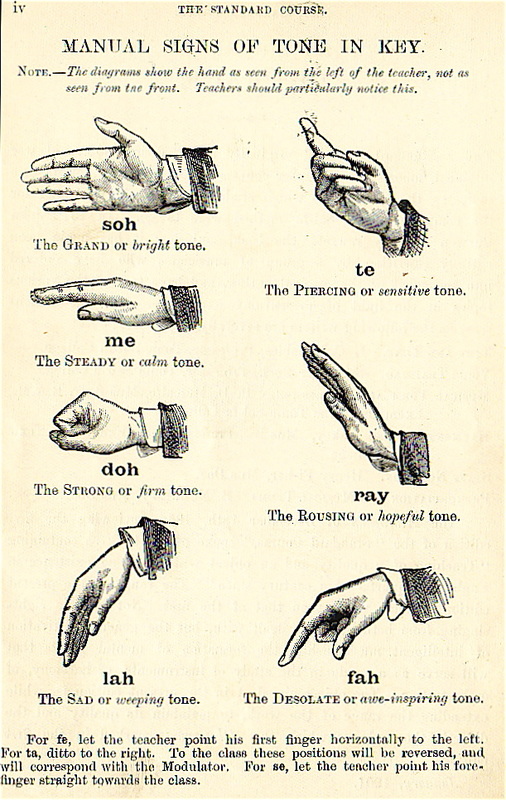Please enjoy learning with me about how Mason did Sol-fa. This page is an introduction to some of the musical concepts that will be used in the lessons. This is a research work in progress. Things may change as I go, but I want to share what I am learning so others can benefit!
Before you begin the lessons, please watch these Videos!
How to do the Solfege Hand Signs (Hand Sign Printable)
If you are jsut beginning your sight singing education with your family here are a few other Recommendations:
All other Children of the Open Air videos
Raeanna Goss Singing Resources – Her Blog Posts on Mason’s Programmes and her lessons and facebook page
Sing Sol-fa – Lessons and Folk song resources
A Touch of the Infinite by Megan Hoyt

Intro to Sol-fa-
This video comes from the Kodaly ( pronounced Ko-Die) Method. Mason’s Sol-fa books used a different approach in that they learned Do and Sol first and then Mi and then some rhythm before moving on. We’ll be using a little bit of both of these methods on this website. We want to do what Mason did, and use her methods and curriculum suggestions when possible, but also follow good, modern research ideas with our music learning as well! So Keep in mind that my lesson plans will incorporate both when needed.
Example Lesson Ideas
Sol-fa is a system of graduated ear training and voice exercises that are added after 1st grade or Form 1b. Form 1b students would do more musical immersion through Singing games and dances which helps prepare and train their ear for more formal Solfege lessons in Forms 1a (2nd grade) and above. You can use hymns and folk songs in your Sol-fa lessons initially to get started. It’s a fun game to try and figure out the Solfege syllables for the tune of a song you already know. Mr. Curwen, the developer of the Tonic Sol-fa system, said sight singing was about learning Tune (pitch) and Time (rhythm).
For example with Twinkle, Twinkle Little Star here is a tune (pitch) lesson you could work through with your children:
Sing to the tune – Do,do, Sol, sol, La, La, Sol—, Fa, fa, mi, mi, re, re, do —-, Sol, sol, fa,fa, mi, mi, re—, Sol, Sol, Fa, fa, mi, mi, re—, Do, do, Sol, Sol, La, La, Sol—, Fa,fa, mi, mi, re, re, do—.
The notes on the piano would be: CC, GG, AA, G-, FF, EE, DD, C-, GG, FF, EE, D-, GG, FF, EE, D, CC, GG, AA, G-, FF, EE, DD, C-.
Here’s a Time (Rhythm) lesson for Twinkle:
Have the kids walk to the steady beat and then when they have that figured out, then have them clap the rhythm that goes with the words. You could do this song two ways. You can use all quarter notes for the words and the beat, except on ARE ( the last note of each phrase) it’s a half note and so they will step twice and only clap once. Or you can have each word be an eighth note and clap twice for each step of the beat. A harder one would be Mary Had a Little Lamb, London Bridge or Hot Cross Buns. Clap the words(rhythm) and walk to the steady beat. This teaches introductory rhythm as well. This will help children establish the beat and also understand that the rhythm is different from the beat.
You can even go a little farther as kids get older and are reading about Music History and Theory in Forms 2 and up.
You can talk about Form with simple folk songs. Here’s an easy example with Twinkle. The song is in ABA form.
A: Twinkle, Twinkle, Little Star, How I wonder what you are.
B. Up above the world so high, like a diamond in the sky.
A. Twinkle, Twinkle, Little star, How I wonder what you are. (the same phrase from the beginning is repeated at the end)
These forms are also used more extensively in Classical pieces, so this will help them listen well to their composer studies.
